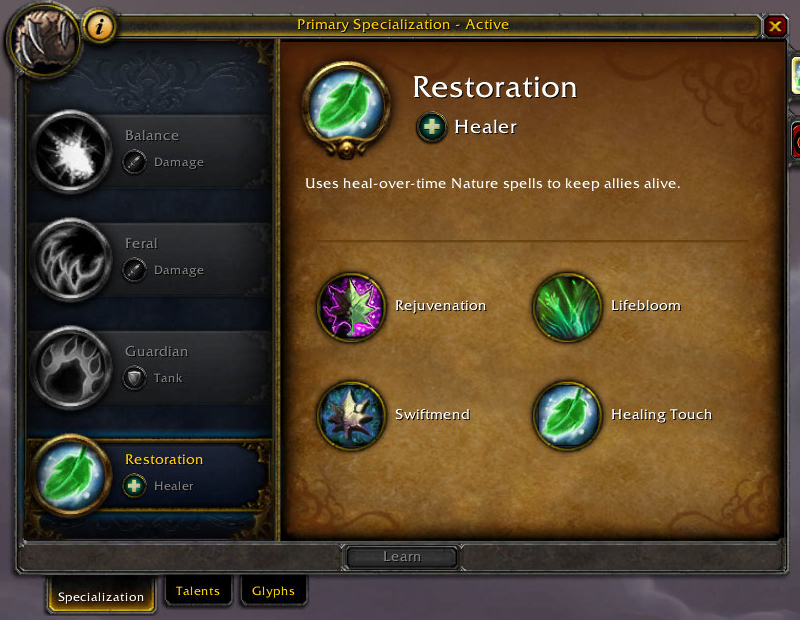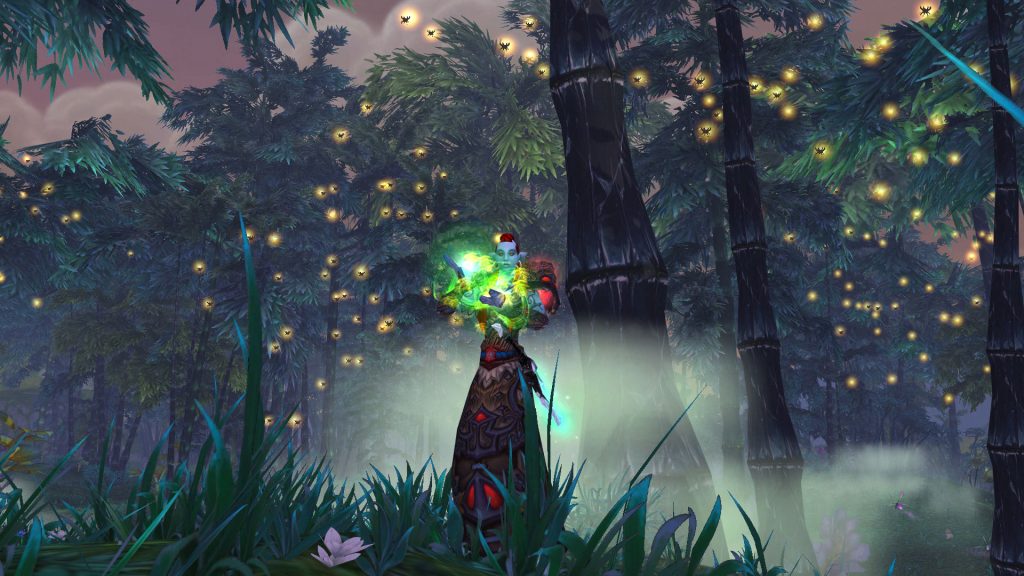- Author: Luxrah
- Date: May 6, 2025
- Updated: May 22, 2025
- Expansion: Mists of Pandaria
Restoration Druids in Mists of Pandaria remain the kings and queens of heal-over-time spells with tons of powerful utility. This expansion brings some unique new spells to their toolkit and opens the door for a new mechanic in the form of Catweaving. This guide will provide you with everything you need to know about building, gearing, and playing your Restoration Druid as you progress through each phase of MoP Classic’s PvE endgame.
Changes in Mists of Pandaria
The pruning of talent trees and removal of Prime Glyphs in Mists of Pandaria have streamlined class specializations in the expansion. Some abilities you may remember will be gone while others have been reworked. The way that the Restoration Druid plays will feel mostly the same as it did in Cataclysm, with some significant tweaks to your rotation. You will still be loading up targets with HoTs, but with even more of a mind toward synergies and planning ahead for incoming damage.
Genesis and Wild Mushroom/Wild Mushroom: Bloom are two examples of these new synergies, letting you springboard off your Rejuvenations for solid burst healing. You also have some new utility in the form of Symbiosis, a very flexible ability that gives you access to a spell from another class. Tranquility has received a buff and is now much more competitive as a healing cooldown. You have several other strong cooldown options from talents as well.
Keep in mind that WoW Classic expansions always launch with class tuning from the final patch of the original expansion. Even in Phase 1 of MoP Classic, the Restoration Druid’s talents and abilities will reflect the state they were in for Patch 5.4.8. One example of this is that Genesis did not exist in the game prior to 5.4. Some of these changes will significantly change the class’s gameplay and performance from how it looked in the original run of the expansion.

Strengths & Weaknesses
 Strengths
Strengths
- Strong AoE Healing
The Restoration Druid is the Oprah of HoTs. You get a Rejuvenation, you get a Rejuvenation! Combined with their new Genesis and Wild Mushroom/Wild Mushroom: Bloom plus Wild Growth, Efflorescence, and plenty of cooldowns, you have all the tools to pump out some pretty impressive raid heals. The best part is that most of it doesn’t require your group to be tightly stacked, as is the case for most AoE heals. You can also choose to leave your HoTs steadily ticking away or you can detonate them for powerful healing on demand.
- Great Mobility
Many of your spells are instant cast, so you won’t feel too rooted in place while healing. You can even cast Tranquility on the go now if you get Spiritwalker’s Grace from a Shaman via your Symbiosis ability. You have Cat Form, Dash, and your choice of Feline Swiftness, Displacer Beast, or Wild Charge from talents.
- Incredible Utility
Innervate and Rebirth have long been invaluable tools for endgame content, and that continues to be true in MoP Classic. You also have tons of crowd control and the ability to swap to Cat Form for mana-free damage or Bear Form for survivability. Your new Symbiosis ability opens the door to even greater flexibility for you and your teammates. You can now give a Holy Paladin the ability to use Rebirth or gain Leap of Faith from a Priest.
 Weaknesses
Weaknesses
- Not Very Reactive
To succeed as a Restoration Druid, you will need to plan ahead, as you won’t be able to respond instantly to damage. Abilities like Genesis, Wild Mushroom: Bloom, and even Swiftmend require you to have your HoTs set up in advance. Stacking HoTs can keep a target up through heavy damage, but only if they are already stacked and ticking when it goes out.
- No Absorbs
Absorption effects are really strong; like HoTs, they can be set up in advance to prepare for damage, but instead of ticking steadily, the full effect sits there waiting to be needed. When incoming damage is low, you may see a Discipline Priest or Holy Paladin eating up all the damage as it comes in, leaving nothing for you to do but overheal. Absorbs and damage reduction abilities can also help other players survive damage that would otherwise kill them, and for that you only have Ironbark.
- Complexity
Having a lot of flexibility and utility comes with a downside. There are a lot of moving parts to keep track of as a Resto Druid. Even beyond tracking your many HoTs and procs, which can be quite a job in itself, you will also be expected to know when other players need an Innervate or Rebirth, when to use your many crowd control abilities, how to use Symbiosis and the abilities you get from it, and how to contribute damage in Cat Form.
Best Races
Druids have the most limited race options of any class, with only have two possible choices for either faction. Racial traits are less impactful in this expansion than they were in earlier versions of WoW, but they can still affect your gameplay as a Restoration Druid.
 Alliance
Alliance
The best Alliance race for Restoration Druids is ![]()
![]() Worgen due to Viciousness, which is your only potential stat boost, even though Crit isn’t that great for you. You’ll also gain a small reduction to incoming Shadow and Nature damage from Aberration and a movement speed boost from Darkflight.
Worgen due to Viciousness, which is your only potential stat boost, even though Crit isn’t that great for you. You’ll also gain a small reduction to incoming Shadow and Nature damage from Aberration and a movement speed boost from Darkflight.

 Night Elf: Nature Resistance, Quickness, Shadowmeld, Wisp Spirit
Night Elf: Nature Resistance, Quickness, Shadowmeld, Wisp Spirit
 Worgen: Aberration, Darkflight, Flayer, Running Wild, Viciousness
Worgen: Aberration, Darkflight, Flayer, Running Wild, Viciousness
 Horde
Horde
The best Horde race for Restoration Druids is ![]()
![]() Troll due to Berserking, which gives you an extra Haste cooldown. Regeneration also gives you a small survivability boost and Da Voodoo Shuffle doesn’t hurt either.
Troll due to Berserking, which gives you an extra Haste cooldown. Regeneration also gives you a small survivability boost and Da Voodoo Shuffle doesn’t hurt either.

 Tauren: Cultivation, Endurance, Nature Resistance, War Stomp
Tauren: Cultivation, Endurance, Nature Resistance, War Stomp
 Troll: Beast Slaying, Berserking, Da Voodoo Shuffle, Dead Eye, Regeneration
Troll: Beast Slaying, Berserking, Da Voodoo Shuffle, Dead Eye, Regeneration


